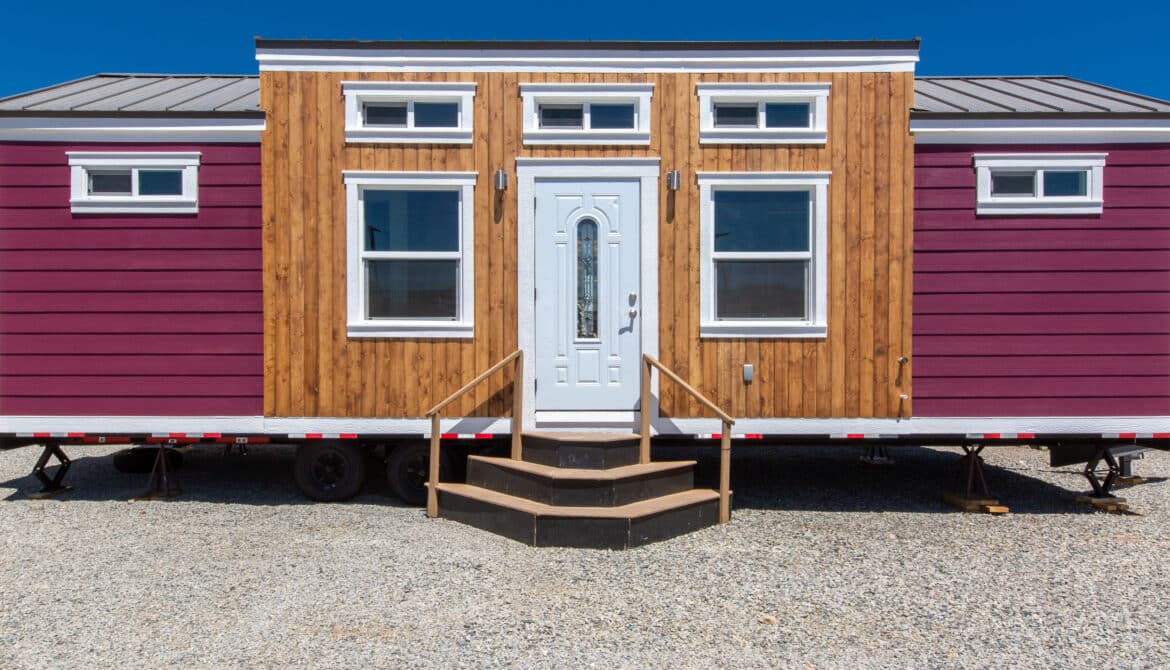Table of Contents
- What to Look for When Buying Land for a Tiny House
- Location and Accessibility
- Cost Considerations
- Zoning Regulations
- Mineral Rights
- Water Rights Issues
- Environmental Factors
- Utilities
- Other Considerations
Building a tiny house is an exciting and unique experience, but it’s important to make sure you’re choosing the right land to build on. Whether you’re buying or renting land for your tiny house, there are several important factors to consider before making a decision. This article will discuss what to look for when buying land for a tiny house, alternative options to buying land, and other considerations.
Location and accessibility are two of the most important aspects when it comes to finding the perfect spot for your tiny house. You’ll want to make sure that the land has easy access, is close enough to amenities and services like grocery stores and hospitals, and that it’s in a safe area. Cost considerations are also important, as you’ll need to factor in the cost of purchasing or renting the land into your budget.
You’ll also need to be aware of zoning regulations in the area where you plan to build your tiny house. It’s important to research local laws and regulations before committing to any land purchase or rental agreement. Additionally, you should check if there are any mineral rights associated with the property you’re looking at. Water rights issues can be complicated so it’s best to consult with an attorney before signing any contracts.
Finally, environmental factors such as soil type and climate should also be taken into consideration when selecting land for your tiny house. Make sure that the ground is stable enough for building purposes and that it won’t be affected by extreme weather conditions or natural disasters like flooding or earthquakes. Utilities such as electricity and water should also be available onsite or nearby if possible.
In addition to buying land for a tiny house, there are other options available including renting land, leasing land, or staying in campgrounds/RV parks. Each option has its own pros and cons so it’s important to do research before making a decision.
Important factors to consider when buying land for a tiny house include location, accessibility, cost, zoning regulations, mineral rights, environmental factors, and utilities. Alternative options such as renting, leasing, or camping should also be explored.
What to Look for When Buying Land for a Tiny House
When looking to buy land for a tiny house, there are several factors to consider. It is important to research the area and understand all of the laws and regulations that come with owning land. This article will discuss what to look for when buying land for a tiny house.
Location and Accessibility
The location of the land is an important factor in deciding whether or not it is suitable for a tiny house. It should be close enough to amenities and services that you require, such as grocery stores, schools, or hospitals. Additionally, the land should have easy access to roads or highways so that you can get around easily.
Cost Considerations
The cost of the land should also be taken into consideration when making a decision about purchasing it. The price of the land should fit within your budget and include any additional fees associated with owning land such as property taxes, insurance costs, or utility bills.
Zoning Regulations
It is important to research local zoning regulations before purchasing land since these laws dictate what type of structure can be built on the property. In some areas, building a tiny house may not be allowed due to zoning restrictions. Therefore, it is important to make sure that building a tiny house on the property will be allowed before purchasing it.
Mineral Rights
When buying land, it is important to check if the seller has retained mineral rights on the property. If they have retained these rights, then they are allowed to extract minerals from your property without your permission or compensation.
Water Rights Issues
Before buying land for a tiny house, you should also research any water rights issues associated with the property. This includes understanding who owns the water rights and if there are any restrictions on how much water can be used from the property.
Environmental Factors
It is also important to consider environmental factors when buying land for a tiny house such as soil quality, air quality, and any potential hazards like flooding or landslides. Researching these factors can help ensure that you purchase safe and habitable land for your tiny home.
Utilities
Another factor to consider when buying land for a tiny house is access to utilities such as electricity and water. It is important to make sure that these services are available in your area so that you can power and supply water to your home easily and safely.
Other Considerations
There are other considerations that must be taken into account when purchasing land for a tiny house such as topography, vegetation cover, nearby wildlife habitats, potential fire risks, and more. Taking into account all of these factors can help ensure that you purchase suitable land for your needs and wants in terms of living in a tiny home space.
Research location, cost, zoning, mineral rights, water rights, environmental factors, utilities, and other considerations when buying land
for a tiny house
.
Alternative Options to Buying Land
When it comes to tiny houses, buying land is not the only option. There are several alternatives to consider when looking for a place to park your tiny house.
Renting Land
One option is renting land from a landlord. This can be a great way to get a place for your tiny house without having to purchase the property. It’s important to make sure you understand the terms of the lease and how long you will be able to stay on the property. You may also need to get approval from the landlord before you can bring in your tiny house.
Leasing Land
Another option is leasing land from an owner or developer. This can provide more stability than renting since there is usually a longer-term agreement involved. The lease agreement should include details such as how much rent you will pay, what type of improvements you can make, and how long you will be allowed to stay on the property.
Campgrounds/RV Parks
If you don’t want to commit to a long-term rental or lease agreement, then campgrounds/RV parks may be an option for you. These types of parks typically offer short-term stays and have amenities such as showers, laundry facilities, and recreational activities. They often have restrictions on what type of vehicles are allowed in their parks, so it’s important to check with them before bringing in your tiny house.
No matter which option you choose for parking your tiny house, it’s important to do your research and make sure that it meets all of your needs and that it complies with local laws and regulations. With careful planning and consideration, any of these options can provide a great place for your tiny home.
Conclusion
Buying land for a tiny house can be a daunting task, but with the right information and research it is possible to find the perfect spot. It is important to consider location, cost, zoning regulations, mineral rights, water rights issues, environmental factors, utilities and other considerations when looking for land. If buying land isn’t an option then renting or leasing land or staying in campgrounds/RV parks are viable alternatives.
Ultimately the decision to buy or rent land comes down to personal preference and budget. Taking the time to do research and think about all of the options available will help make the decision easier and ensure that you find a place that meets your needs.


